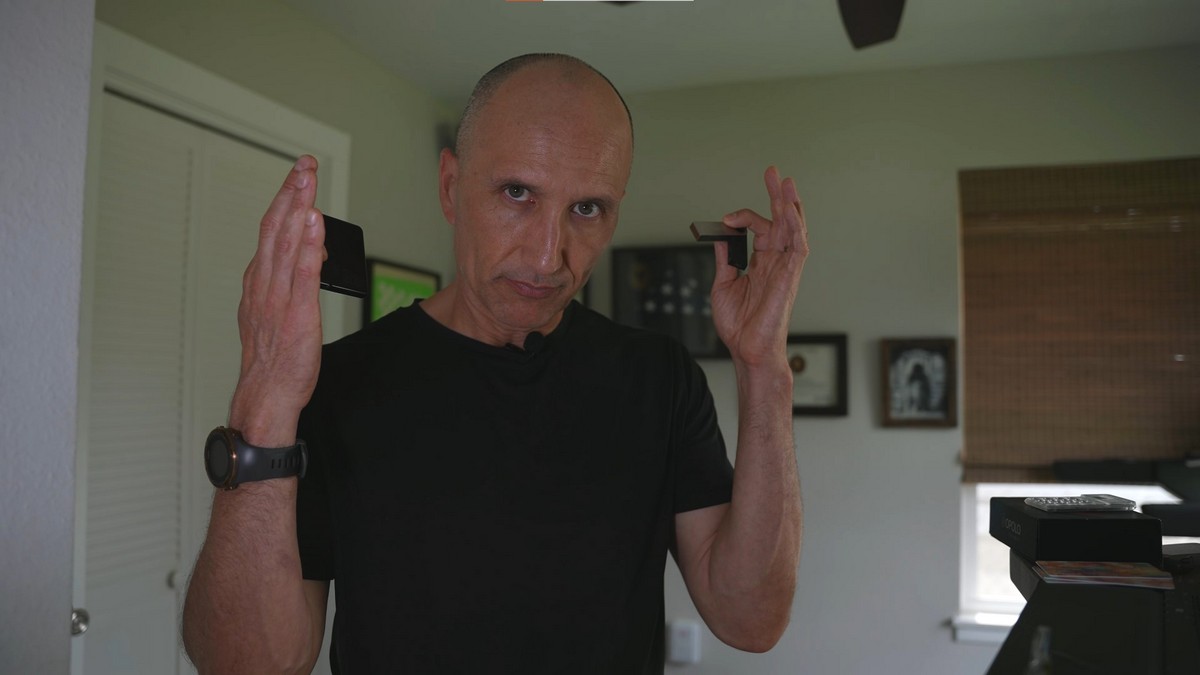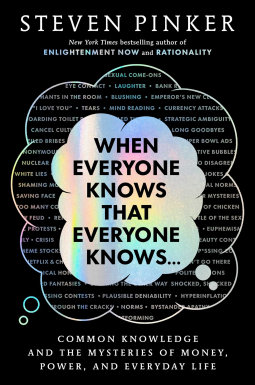Reviews
You won't find reviews of Hike Your Own Hike or The Hidden Europe here (that's a lie: there's one review for The Hidden Europe). Instead, this section is for my review of other books, especially nonfiction books, which I comprise 95% of my reading. I occasionally review clothes, movies, a politician, a gadget, or anything else that looks promising.
I've put my best reviews here, but if it's not enough, then you'll find hundreds of reviews on Amazon. I am one of the top 10,000 reviewers on Amazon with over 1,500 helpful votes. And yes, I can review your product if you'd like. Just contact me to see if I'm interested.

The patent-pending capsule holds up to 120 words; enough storage for 10 seed phrases of 12 words each.
- The capsule is hacker-proof, fire-proof, water-proof, impact-proof and shock-proof
- Rugged aluminum and stainless steel construction; seed phrase strips are able to withstand 2192 degrees Fahrenheit
- Compatible with all cryptocurrency recovery seed phrases and key types including Hex, BIP39, Alphanumeric, and all wallets
- The capsule has additional storage space inside for other valuables such as gold and silver coins, jewelry, and documents
Buy the Capsule on Amazon.
Product Dimensions 10.25 x 2 x 2 inches
Leave anonymous audio feedback at https://speakpipe.com/ftapon
More info
You can post comments, ask questions, and sign up for my newsletter at http://wanderlearn.com.
My Patrons sponsored this show!
Claim your monthly reward by becoming a patron at http://Patreon.com/FTapon
Rewards start at just $2/month!
Affiliate links
Start your own podcast with the same company I use, Podbean, and get one month free!
https://www.podbean.com/ftapon
In the USA, trade crypto with Kraken
Outside the USA, trade crypto with Binance and get 5% off your trading fees!
For backpacking gear, buy from Gossamer Gear

The Ballet Wallet is a fabulous solution for:
- Novices
- Those with under $100k in crypto
- Want to have some of their crypto easily accessible or transferable, but they don't want to have 100% of it on their smartphone.
- Gifting crypto
- Inheritance
Ballet Wallet could be used in conjunction with hardware wallets like the Ledger or Coldcard.
If you liked my unbiased review of the Ballet Wallet and you'd like to buy one or some other crypto wallet, please use the appropriate affiliate link below to help support this channel and get a discount.
Prices sometimes change after I made the video:
- Buy a Ballet wallet direct from the manufacturer & 5% off.
- Buy a Ballet wallet from Amazon in 1 unit ($35) or 3-pack ($80-100) or more.
BUY COINKITE'S COLDCARD or OPENDIME.
BUY A LEDGER.
Securing your cryptocurrency is paramount, but there is no one-size-fits-all solution.
Check to make sure:
-
QR Code sticker hasn’t been peeled off
-
The passphrase scratch-off has no scratches
-
All the serial numbers are on the top of the wallet
-
(Optional) Use a UV light to make sure the Ballet ‘B’ logo and the words ‘BITCOIN’ are shown on the top QR Code sticker
I review:
-
How to download the Ballet Crypto App
-
How to add the Ballet wallet into the Ballet Crypto App
-
Show how the app looks like
I was not able to:
-
Show the ‘Buy Crypto’ and ‘Exchange’ functions
-
Show that you can add in different types of cryptocurrencies
Things I mentioned
-
Brief introduction of Ballet (when it started, who the founder is, etc.)
-
The most easy-to-use non-electronic, physical wallet
-
It has the same level of security as other wallets
-
The two components of the encrypted private key and the passphrase are created in two different locations and have never been interacted with each other
-
The actual unencrypted private key has never been revealed until the user signs and sends a transaction
-
Safe to use, easy to use, and great for gifting
-
No need to write down or memorize a 24-word mnemonic seed phrase
-
Great for long term cold storage
Additional info:
-
Follow Ballet on Twitter.
-
The Two-Factor Key Generation process.
-
The open-source decryption/verification website tool (recommended to use while disconnected from the internet).
- https://www.bitaddress.org/
- https://github.com/
bitcoinjs/bip38 - https://iancoleman.io/
bitcoin-key-compression/
More info
You can post comments, ask questions, and sign up for my newsletter at http://wanderlearn.com.
If you like this podcast, subscribe and share!
On social media, my username is always ftapon. Follow me on:
- http://facebook.com/ftapon
- http://twitter.com/ftapon
- http://youtube.com/user/ftapon
- http://pinterest.com/ftapon
- http://tumblr.com/ftapon
My Patrons sponsored this show!
Claim your monthly reward by becoming a patron at http://Patreon.com/FTapon
Rewards start at just $2/month!
Affiliate links
Start your own podcast with the same company I use, Podbean, and get one month free!
https://www.podbean.com/ftapon
In the USA, trade crypto with Kraken
https://r.kraken.com/c/2226643/687189/10583
Outside the USA, trade crypto with Binance and get 5% off your trading fees!

One of the best things about cryptocurrency is that you can self-custody your assets.
One of the worst things about cryptocurrency is that self-custody is complicated.
Although it is much easier now than ever, it's still cumbersome and NOT user-friendly.
Opolo is changing that.
But is their hardware wallet solution worth $250 when you can buy a Ledger Nano X for less than half the price?

Watch the head-to-head matchup between the Opolo and Ledger and decide for yourself.
00:00 Intro
01:30 Randomized keyboard
02:45 Sharding backup cards
07:40 Passphrases
13:28 RFID backup issue
15:00 Security
17:48 Price
18:20 Two minor flaws
20:10 Verdict

Enjoy my comprehensive video review of Coinkite's SEEDPLATE.
It's a 3x5-inch metal plate with prefabricated etching so that you can stamp out your cryptocurrency wallet's 24-word seed phrase.
Having a hardware wallet is a fantastic way to manage your private bitcoin keys and sign transactions.
But what happens if your hardware wallet (or software wallet) breaks or gets lost or stolen?
You can recover it with your 24-word (or sometimes 12-word) seed phrase.
Experts urge you NOT to write those 24 words on ANY electronic device.
Paper can age, burn, or become unreadable if it gets wet in a flood.
What's the solution?
Etching your seed phrase on metal tough enough to survive most disastrous events.
You might want to buy 2-4 SEEDPLATES.
Why?
First, if you use a passphrase on your wallet for added security, then you'll need to back up those words just as securely as your 24-word seed phrase (assuming you've associated BTC with that passphrase).
Second, if you're super paranoid, you'll want to stamp out a pair of SEEDPLATES and place them in separate locations in case one place suffers a nuclear attack that pulverizes your SEEDPLATE.
Yeah, that's an extreme measure, but if you're worried about losing your bitcoin or crypto, then this is the ultimate prudent step.
Each SEEDPLATE costs less than $49 if you buy it using my affiliate link.
You can also buy an Automatic Center Punch for $9 at the Coinkite store.
Lastly, are you looking for the BIP-39 word list that I referred to a couple of times in the video? Here you go:
https://github.com/bitcoin/bips/blob/master/bip-0039/english.txt
It's the 2,048-word dictionary that you'll need to decode the 4-letter words on a SEEDPLATE.
For example: if your SEEDPLATE's first word is ABAN, then you look it up on the list, and it's ABANDON.
If it's PION, then you look for the only word on the BIP-39 list that starts with those 4 letters. Answer: PIONEER.
No word on the BIP-39 list shares the first 4 characters of another word on the list.
That's why you only need to write the first 4 letters.
More info
You can post comments, ask questions, and sign up for my newsletter at http://wanderlearn.com.
If you like this podcast, subscribe and share!
On social media, my username is always ftapon. Follow me on:
- http://facebook.com/ftapon
- http://twitter.com/ftapon
- http://youtube.com/user/ftapon
- http://pinterest.com/ftapon
- http://tumblr.com/ftapon
My Patrons sponsored this show!
Claim your monthly reward by becoming a patron at http://Patreon.com/FTapon
Rewards start at just $2/month!

Yo-yoing the CDT without a pot or a stove was austere.
For 7 months, I never had warm food (except when I resupplied in town).
It was surprisingly easy to get used to uncooked food. I ate:
- Nuts
- Energy bars
- Powdered soy milk with cereals
- Dried fruit
- Bread and crackers
- PB&J
A few times, I would soak couscous overnight in a ziplock bag. I would eat the cold couscous in the morning, except that one morning when it was frozen solid.
I lacked the crazy cravings that I expected to have. Still, if I had to do it all over again, I would bring Gossamer Gear's Crotch Pot!
Watch my video review of the Crotch Pot

What is Opendime? It is:
- Bitcoin on a stick.
- A Bitcoin piggybank.
- Not another hardware wallet since it has no PIN or password
- It's not like other "physical" bitcoin because nobody knows the private key until you physically alter the device.
- A disposable hardware wallet that can be used as cash.
Buy your Opendime
What’s new with V4?
It's an incremental (and not a radical) upgrade from v3. Coinkite has improved Opendime's:
- Form factor.
- Electrostatic discharge (ESD) protection
- Speed
- Recoverability in case of damage
- Blockchain viewing options (it added blockstream.info)
Why use it?
- Gift: each Opendime costs about $17 and you can load it up with as much BTC as you want. Graduation present. Help someone buy a car or a house. Birthday gift for over $100.
- You want to buy something expensive in a hurry.
- Sell Opendimes with BTC.
- Anonymous transaction: it's almost impossible to know who spent the Opendime.
- It’s better than a paper wallet because it has the upsides but also generates the private key safely.
- Emergency money when you're traveling - it's like a traveler's check that works in the most repressive regimes. Wear it as a necklace under your shirt so that even if they steal your wallet and bags, you'll still have money. All you need a computer or a smartphone (with a USB-adapter).

In the 2020s, more travelers will want to make bitcoin transactions anywhere on the planet. Most will use their smartphones, which is somewhat secure.
However, if you the best security, you should use a bitcoin hardware wallet.
In this faceoff, we'll review the two best hardware wallets: Coinkite's Coldcard MK3 versus Ledger's Nano S.
Since there is substantial information about the Ledger Nano S, we'll focus on the Coldcard MK3.
Because the Nano X is similar to the Nano S, much of what I say about the Nano S also applies to the Nano X.
Watch my video review
What I love about the Coldcard MK3
- Big, fat numeric keypad and decent vs. the Ledger's tiny buttons and screen
- The Coldcard MK3 offers bulletproof security.
- Ingenious double-PIN security system.
- The Coldcard MK3 comes with a Duress PIN that is useful if someone is forcing you to reveal the PIN
- Even better, the Coldcard MK3 comes with a Brick PIN, which allows you to erase the Coldcard completely with one PIN - that's also useful in an emergency.
- Unlike other hardware wallets, its process is in effect a flash ROM (read-only memory) with a pathetic 10k bits of storage. This is good news for you because it makes it effectively impossible to be reprogrammed.
- 12-word encrypted backups.
- The Coldcard MK3 can fool an unsophisticated person into thinking that it's just a geeky calculator.
- Its display can show QR codes.
- The Coldcard MK3 supports Partially Signed Bitcoin Transactions (PSBT), thereby giving you supreme security through its air-gapped technology.
Coldcard MK3 Tips
- Verify that the tamper-evident bag has not been opened or altered.
- Back up your file on a MicroSD card, but do not put that file on any computer (unless it's an emergency). If you need to restore the backup, it's better to buy a new Coldcard and restore that.
- Connect it with the Wasabi wallet (or Electrum), but only in an air-gapped fashion (i.e., never plug your Coldcard directly into a PC).
- Be careful because there is no factory reset!
- Do not lose/forget your PIN. If you do, nobody can help you.
You should buy the Coldcard if you . . .
- Want the most secure hardware wallet in the solar system.
- Want to store a significant amount of BTC (over $10,000) - although it works great for $10 too.
- Make fewer than 100 bitcoin transactions per year (and if you make more than that, you could still use the Coldcard as your cold storage bank and use a hot wallet for your daily use).
- Are technically competent and somewhat geeky.
- Want a superior device interface than the Ledger S.
- Manually create a random seed with 99+ six-sided dice rolls!
- Want encrypted backups.
- Are a bitcoin maximalist (bitcoin is the only cryptocurrency you own).
- Are familiar with one of these bitcoin wallets: Bitcoin Core, Electrum, or Wasabi. (It also works with Generic JSON wallets).
- Are willing to trade-off convenience for extra security.
- Want a login-countdown option: this forces a delay of your choice (mins to 28 days) before you can access the device, which would be useful if a criminal who is in a hurry wants to quickly access your funds (the downside is that you're also limited).
You should buy the Ledger Nano S or X if you . . .
- Want to manage multiple cryptocurrencies with one device (the Coldcard only stores bitcoin).
- Plan to do many transactions while on the road; the Nano X's Bluetooth makes that easy with a smartphone.
- Are a novice.
- Are not much of a geek: if you're often asking other people to help you with your smartphone or computer, then get the Ledger since it's a simpler system than the Coldcard
- You like the Ledger Live software interface.
- You're afraid that you will royally screw up. You can factory reset a Ledger, but (for added security) you cannot reset a Coldcard.
Verdict: Coldcard MK3 Wins!
If you're looking for the most bulletproof security to safeguard your bitcoins in cold storage, then Coldcard is the way to go.
Some people may want the Coldcard mainly for ergonomic reasons: they like that it has a screen that displays a QR code, as well as the buttons that are also larger than the Ledger Nano S or X. They could plug the Coldcard directly into their PC to make transactions and ignore Coldcard's air-gap feature.
Final security point
Whether you use a Ledger or Coldcard, what matters more than anything else is protecting your 24-word seed phrase. Probably 99% of the lost/stolen bitcoins are due to someone putting their seed phrase in an insecure location (which a hacker or thief can access) or forgetting/misplacing the seed phrase (thereby permanently locking yourself out of your wallet).
Therefore, don't think that because you have a robust Coldcard that you're safe. All you've done is eliminate one of the 100 different ways that you can lose your bitcoins.
Buy a Ledger or a Coldcard - or both!
If this article was helpful, please use the affiliate links below to buy your hardware wallet. It costs you nothing, but the manufacturer gives a tiny bonus.
or

In 2019, Gossamer Gear launched its Ranger 35 Backpack.
I got lucky and was honored to go on a day hike with Glen Van Peski, Gossamer Gear's Founder.
Be sure to listen to our one-hour conversation on my podcast.
We paused to review the Ranger 35.

This book starts with a simple question: what would an alien think of humans?
We feel like we're pretty normal and rational, but Steve Stewart-Williams proves otherwise in The Ape that Understood the Universe.
We're a strange primate.
The author delves into many topics, including human sexuality.
As Bill Maher said:
"There are no such things as mutual fantasies! Yours bore us; ours offend you."

Today, Yuval Noah Harari launched his third book, 21 Lessons for the 21st Century. Although it’s weaker than his first two books (Sapiens and Homo Deus), it’s still excellent and worth reading.
It seems that no other historian spends more time talking about the future than Harari. He should change the Historian label for the Futurist title.
The 21 lessons are organized into 5 parts.
Instead of repeating the 21 chapter titles (which are coyer than descriptive), I’ll succinctly summarize the takeaway from the chapter.
Here’s a teaser of what Harari’s 21 lessons are:
- Michio Kaku's Take on 'The Future of Humanity'
- 'Figures in a Landscape' Book by Paul Theroux is Great
- Who Should Read 'North' by Scott Jurek
- 'Saving Africa' book by Timoleon Amessa
- The Most Dangerous Idea in the 'Black Panther' Movie
- 'Black Brain, White Brain' - a brainless book by Gavin Evans
- 14 Amazing Maps From The 'New Views' book by Alastair Bonnett
- Shedding Black Africa's Burden book by David Ogula
- Space Barons book by Christian Davenport
- Surviving Kidnappers book by Olav Ofstad
Your comment will be deleted if:
- It doesn't add value. (So don't just say, "Nice post!")
- You use a fake name, like "Cheap Hotels."
- You embed a self-serving link in your comment.




